- Home
- Peter Ackroyd
Foundation Page 8
Foundation Read online
Page 8
These three kingdoms were eventually forged together by fire and slaughter, and the growth of a unified kingdom can in part be seen as a desperate response to an external threat. In 790 three boats of Norwegian men landed upon the Dorset coast at Portland; an official rode from Dorchester, believing them to be the familiar merchants of that country, and prepared to escort them into the town. They turned around and killed him. They were warriors, not traders.
Three years later men from Norwegian ships attacked the monastery of St Cuthbert on the island of Lindisfarne. The attacks were as unexpected as they were unwelcome. The monastery was ransacked and many of the monks were put to the sword. ‘Never before has such a terror appeared in Britain as we have now suffered from a pagan race,’ a chronicler wrote, ‘nor was it thought that such an inroad could be made from the sea.’ A year later the monastery at Jarrow was attacked. No one had feared such an invasive force because the people of the north had previously come as peaceful traders. They were masters of commerce, as their later settlements in York and Dublin would testify. Long before the raids commenced, there had been Scandinavian settlers in East Anglia. The location of the eighth-century poem Beowulf is to be found in southern Scandinavia.
The men of Norway were better known at the time as Norsemen or, in the English sources, as Vikings; the name was also applied to the men of Denmark, but at the beginning the Norwegian warriors were the dominant force. The víkingar were ‘the men from the fjords’. They came because their own territories were unsettled by the emergence of new and centralized kingdoms; these kingdoms in turn encouraged the formation of warrior bands ready to kill and pillage. The land of Denmark was also being threatened by Charlemagne, king of the Frankish Empire, further undermining the powers of the ruling elite. It takes only one moment of fear to launch a hundred ships. This was the period, too, when the design of the longboat was perfected. The wind was literally in the sails of the Norsemen.
Another cause can be found for these bloody expeditions. The monasteries of Lindisfarne and Jarrow were not attacked at random; they were chosen as examples of revenge. The onslaught of the Christian Charlemagne on the ‘pagans’ of the north had led to the extirpation of their shrines and sanctuaries. The great king had cut down Jôrmunr, the holy tree of the Norse people. What better form of retaliation than to lay waste the foundations devoted to the Christian God? The Christian missionaries to Norway had in fact set out from Lindisfarne. So its destruction was nicely calculated. It was the beginning of what might be called an anti-Christian crusade. In the year the monastery burned, premonitions passed across the tremulous English sky. The Anglo-Saxon Chronicle records that in 793 ‘terrible omens appeared over the Northumbrians and miserably distressed the people: there were immense lightning flashes, and fiery dragons were seen flying in the sky’.
Yet these early raids were really only a warning, a seismic shudder before the fire burst forth. The English people were becoming more nervous, and the archaeological evidence suggests that more of them chose the safety of the walled towns. The earliest monastic chronicle was written at this time, to be incorporated later into the first version of the Anglo-Saxon Chronicle. The hand of the monk may have been guided by a sense that the world was changing for the worse.
In 830 the raids began once more. The forces of ‘heathen men’ had come for land and slaves and women. They fell upon the island of Sheppey, off the coast of North Kent, in 833. As its name implies, it was filled with sheep and good pasture. That was the prize. The Norsemen were well known for their skills in stock-breeding. Over the next thirty years a score of other attacks took place, from the men of Denmark in particular. Kent and East Anglia were an attractive target; the first sea battle in English history took place off Sandwich, in Kent, when the invaders were rebuffed. But the port at Southampton was ravaged by them. London and Rochester were attacked. The army of Northumberland was defeated in battle. The threat came from all sides.
Some of the warriors were known as ‘wolf-coats’ from their mode of dress and from the howls they sent up in battle. They brandished long kite-like shields, and wielded ferocious battleaxes against their prey. Others were known as ‘berserks’ because they wore no armour and charged the enemy in the throes of blood frenzy. The sagas tell of one warrior known as ‘the children’s man’; unlike his companions, he refused to impale children on the tip of his lance. These men were the terror of England.
The raids were simply the prelude to a true invasion. In 865 a great host of Danes descended upon East Anglia. This was the region their ancestors knew best and where many of them already lived. These men had not come to raid; they had come to settle. It is no coincidence that in this period there was a marked increase in the population of Scandinavia, where land was becoming more scarce.
They came in their thousands, aboard hundreds of ships; each ship could carry no more than thirty men. They dwelled in East Anglia for twelve months, taking command of the local resources and in particular marshalling a regiment of good horses. They established fortresses, or defensive encampments, from which they ruled the surrounding land. In 866 they rode against York, and took the city. Their control lasted for almost one hundred years. From York they gained mastery of Northumberland. Then they rode south and captured Nottingham. The king of the Mercians appealed to the king of Wessex for assistance, but eventually he was obliged to buy off the enemy.
The Danes had now acquired the two kingdoms of Northumberland and East Anglia. The kings of these territories were executed in the ritual of the ‘blood eagle’, whereby the lungs were ripped out of the body and draped across the shoulders so that they resembled an eagle’s folded wings. The charters, the ornamented books, the diocesan records, of the two kingdoms disappear. It was a time of devastation for the landed proprietors of the soil.
In 870 the Danes set up a great camp in Reading, and began preparations to invade the kingdom of Wessex. At this stage in the history of England there emerges Alfred. He had encountered the Danes before, when his older brother came to the aid of the Mercians. Now he was king. It cannot be said, however, that his first actions were entirely heroic. After a series of defeats, he bought off the Danish forces with coin and treasure. He incurred the wrath and hatred of the monks at Abingdon for purloining their wealth in the process; in their history he is named as a ‘Judas’. The Danes retired to London which they now also controlled. For a period Alfred was reduced to the role of a tributary king, and was obliged to take silver from the Danes to coin his own currency.
Further attacks and incursions were organized by the invaders, who were still intent upon complete mastery of Wessex; it was the largest surviving English kingdom, and thus the key to supremacy. For the most part Alfred’s army seem to have shadowed the forces of the Danes as they conducted raids or acquired more territory and, after one particularly bloody defeat at Chippenham, Alfred was forced to take refuge in the Somerset marshes. Here at Athelney he built a fortress; from his sojourn in the marshes springs the story of his burning the cakes, once known to generations of English schoolchildren, but it is an eleventh-century fiction designed to emphasize the wretchedness of his plight before his final victory. And a victory came.
In the spring of 878 he rallied the forces of Somerset, Wiltshire and part of Hampshire at a place known as ‘Egbert’s Stone’. He fought a great battle at Edington in Wiltshire against Guthrum, the Danish leader, and the Danes were defeated. Guthrum accepted the outcome, and with several of his commanders was baptized into the Christian communion. Alfred stood as his sponsor in this signal act of conversion, where Guthrum took the Wessex name of Athelstan. In the battle between the pagans and the Christians, Christianity had won. This had become a war about faith as much as land.
Why was it that Alfred and Guthrum could enter such a holy or unholy alliance? They were both of the same blood. Guthrum and the Saxon, Alfred, were great kings in the same sacred tradition. Alfred may have been a Christian leader but he also traced the descent of his royal h
ouse from Woden. The Germanic and Scandinavian peoples were deeply related. They had much more in common than anything they shared with the men of Cornwall or of Devon. They were, in a sense, relatives. So they came to an agreement to divide England between them.
Alfred was not in a position to dictate terms. The negotiations took place in the shadow of the Danish forces that were still within Wessex. Guthrum was already king of the land in the east, from the Thames to the Humber, and had no intention of abandoning England. So he kept what he had conquered by force of arms. No doubt Alfred also gave him money. One phrase of the treaty establishes that ‘all of us estimate Englishman and Dane at the same amount’. Equality reigned between them, in other words.
So was set up the region of the country known by the eleventh century as ‘the Danelaw’. This essentially comprised the largest part of northern and eastern England, with a colony of Norwegians in north-western England. The process of settlement was made more intense, with successive waves of immigration from the coastline of north-western Europe being organized by the leaders of the Danish army in England. The chronicles use the phrase of the lands being ‘shared out’, suggesting some high authority. The later settlers were obliged to take up poorer land than that of their predecessors; but land in England was still available. The Danish farmers were situated by fortified towns or ‘burghs’ manned by the Danish army, from which we derive the term for borough. These forts could be used for the purposes of defence or of public assembly.
The most important territorial divisions of the Danelaw were the five boroughs of Nottingham, Leicester, Derby, Stamford and Lincoln. Those boroughs of course still survive, all except Stamford becoming county towns. Yet the evidence of Scandinavian loan-words suggests that the entire region of north and east was assimilated by the new settlers. There are hundreds of place names of Danish and Swedish origin, the most notable being those that end with -by or with -thorpe. Streoneshalch was renamed as Whitby, and Northworthig became Derby. The plethora of Kirbys or Kirkbys in the area of the Danelaw suggests that ‘settlements by the church’ were recognized by the invaders. The survival of English place names, however, sometimes in close proximity to the newly named settlements, suggests that the native people of humble stock were left undisturbed.
The Danes brought trade and prosperity to the areas under their control. It is not at all surprising that in the eleventh century the three most wealthy shires were Norfolk, Suffolk and Lincolnshire, which had all been part of the Danelaw. York itself was one of the richest and most flourishing cities in the kingdom. It was guarded by strong walls, and excavations have revealed streets of narrow and tightly packed wooden houses complete with workshops and warehouses. Jewellers and metalworkers lived beside workers in wood and in textiles. And everywhere there were merchants, trading with Ireland, with France and, of course, with Scandinavia. They were engaged in the business of pepper, and of vinegar; of fish, and of wine; of salt, and of slaves.
After the treaty was concluded with Guthrum, Alfred had the opportunity to rebuild the defences of his kingdom against any further incursion. Throughout southern and western England he set up a system of fortified towns similar to those established in the Danelaw. An elaborate network of these towns was created to ensure that no one lived more than 20 miles (32 kilometres) from a refuge. It was the beginning of the first true or systematic urbanization within England, springing from the urgent military necessities of the moment, since the Roman epoch. Within a hundred years most of the burghs had become fully ordered towns with courts and markets.
Iron Age hill forts such as those at Hastings and Southampton, and early Romanized settlements like those at Bath and Winchester, were restored with stronger walls. New towns were built, employing a grid system of streets that still survives in towns such as Wallingford and Cricklade that are sited by the Thames. Alfred knew the importance of guarding the major rivers that flowed through his land. Each burgh had a large force of defenders, placed there with their families. In addition Alfred began the formation of a permanent navy to deter any further hostilities from Scandinavian war-bands. An early warning system of beacons, set on hilltops, was put in place. His territories, therefore, were militarized in a great programme of public works.
But, for a while, Alfred’s protection did not seem enough. In 896, six years after the death of Guthrum, another Danish king invaded East Kent with a force of 4,000 or 5,000 warriors; they had brought their women and children with them, and their purpose once again was to settle. Alfred led his army into the region and forced them to retreat to their encampments. But he then became aware of a greater threat. The arrival of these new settlers destroyed the uneasy peace between the English and the people of the Danelaw; ships from East Anglia and from Northumbria sailed around the coast and attacked the northern reaches of Devon. Another Danish contingent besieged Exeter. All the parties of the Danes colluded. The plan was to force Alfred to concentrate in the west, while the new invaders took over Kent and Essex.
In the course of the next few months Alfred defeated the Danish forces in the west, while sending reinforcements to the support of south-east England. The chronology of what became known as Alfred’s ‘last war’ is not entirely clear, but the result is not in doubt. The invading Danes gave up their attempt to acquire the territories of the south-east and instead settled among their compatriots in East Anglia and Northumbria. They may have been bribed to leave Essex and elsewhere. They may have bowed to the inevitability of the strong defence set up by the system of burghs. In any event, Alfred had defended his kingdom.
Yet he also defined his kingdom. He generally termed himself ‘the king of the Angles and of the Saxons’, but one of his newly minted pennies uses for the first time the legend ‘REX ANGLO’. With the pagans settled on the very borders of his land, he did his best to assert English identity. He was a Christian king in the face of heathen warlords. The Danes had attempted to extirpate the spiritual civilization of the English; Alfred would do everything within his power to cultivate English learning and the study of English history. Even as he was creating the system of burghs and building a navy, he was fostering a programme of translating major Latin texts into the West Saxon vernacular. He wished to commission books ‘which are most necessary for all men to know’. He is one of the very few kings of England who himself wrote books. He translated Pope Gregory’s Pastoral Care, the Consolation of Philosophy by Boethius and the Soliloquies of St Augustine; he caused to be translated Bede’s Ecclesiastical History of the English People and Histories against the Pagans by Orosius, thus defining the context for his devoted scholarship. The English, at least according to their sacred historians, were the people of God.
In the reign of Alfred’s son, Edward the Elder, the English began to conquer the territories of the Danelaw and to absorb its people into the larger society. The Danes were more vulnerable because they had settled; they were no longer the roving war-bands that had threatened Alfred, and they had always been more skilled at attack than at defence. In 917 and 918 Edward’s soldiers marched out into the Danelaw, building fortresses as they moved forward. They seized Derby and Nottingham; then the men of Lincoln submitted to King Edward. By 920 all of the country south of the Humber had recognized him as overlord. This was a true conquest, since the rulers of Wessex had never before been lords of the eastern lands. The battles were remembered for many centuries, and it was said that the purple pasqueflower grew in the meadows where Danish blood had been spilled.
The people of the Danelaw were converted to Christianity within two or three generations, and their old burial customs were forgotten. They were in any case so close to the Angles and the Saxons in custom and character that they effortlessly mingled with them. The English language is filled with Scandinavian words such as ‘sky’ and ‘die’, ‘anger’ and ‘skin’ and ‘wing’, ‘law’ and ‘birth’, ‘bread’ and ‘eggs’. There is scarcely a phase of human activity that has not been deeply influenced by Danish nomenclature.
/> The memory of the Danish occupation survived. The Orkney islands and the Shetlands were in fact not surrendered to Scotland until the latter half of the sixteenth century, and Norwegian was still being spoken in the Shetlands at the end of the eighteenth century; the island accent is still much closer to Norwegian than to Scots or English. In the middle of the nineteenth century the people of Northamptonshire, according to a local historian, maintained ‘a traditional remembrance of their oppression’. In Cornwall, at the end of the same century, a colony of red-headed people were called ‘Danes’ with whom the local population would not marry. Samuel Pepys was informed that the west door of Rochester Cathedral was covered with ‘Dane-skins’. All this suggests that the viciousness of the early invasions and battles had left a deep and abiding mark.
After the partial unification of England by Edward there followed a line of powerful kings whose names have faded from the collective consciousness of the English; yet the memory of one of them, Athelstan, was revered for many centuries. His name means noble stone, like the throne in Kingston upon which in 924 he was crowned and anointed with holy oil. In the fourteenth century he was still invoked when land was granted:
This land and twig I give to thee,
As free as Athelstan gave it to me,
And I hope a loving brother you will be.
He was the son of Edward the Elder, and became heir to a great dynasty; he was intent, however, upon augmenting the kingdom that he had inherited. He defeated in battle the king of York and his ally, the king of Dublin; Dublin and York were the twin engines of a Norse trading empire that was now coming to an end. Athelstan seized York, and subdued Scotland. The forces of the north then launched a counter-attack, but in 937 were decisively beaten at a place known only as Brunanburgh. ‘From this period,’ a chronicler wrote, ‘there was peace and abundance of all things.’ Many years later the period of Athelstan’s struggle was still known as ‘the great war’, just as the First World War is now remembered.

 The Clerkenwell Tales
The Clerkenwell Tales The Canterbury Tales
The Canterbury Tales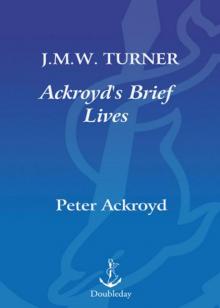 J. M. W. Turner
J. M. W. Turner Chatterton
Chatterton The Canterbury Tales – A Retelling
The Canterbury Tales – A Retelling Alfred Hitchcock
Alfred Hitchcock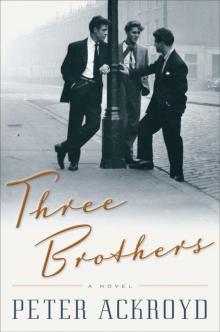 Three Brothers
Three Brothers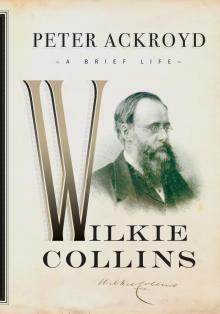 Wilkie Collins
Wilkie Collins Venice
Venice Poe
Poe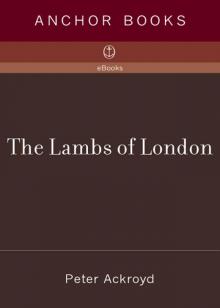 The Lambs of London
The Lambs of London London
London Queer City
Queer City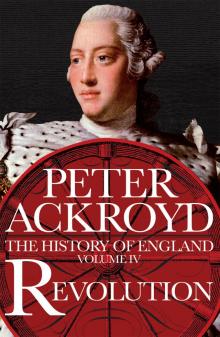 Revolution, a History of England, Volume 4
Revolution, a History of England, Volume 4 Venice: Pure City
Venice: Pure City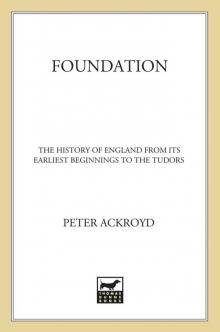 Foundation
Foundation Thames
Thames The Plato Papers
The Plato Papers The house of Doctor Dee
The house of Doctor Dee Rebellion: The History of England from James I to the Glorious Revolution
Rebellion: The History of England from James I to the Glorious Revolution Albion: The Origins of the English Imagination
Albion: The Origins of the English Imagination The Fall of Troy
The Fall of Troy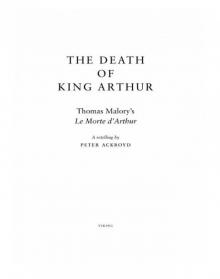 The Death of King Arthur
The Death of King Arthur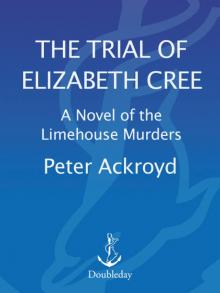 The Trial of Elizabeth Cree
The Trial of Elizabeth Cree London: The Biography
London: The Biography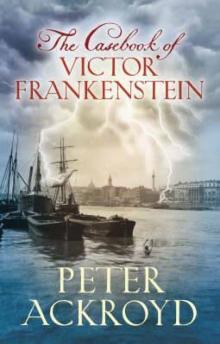 The Casebook of Victor Frankenstein
The Casebook of Victor Frankenstein Hawksmoor
Hawksmoor Charlie Chaplin
Charlie Chaplin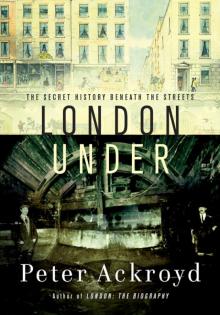 London Under
London Under